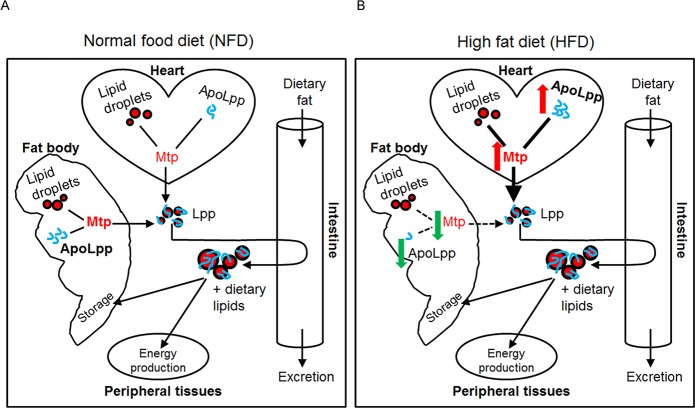Fig 7. A model depicting the relative contributions of Lpp derived from the fat body and cardiomyocytes in controlling systemic lipid metabolism on NFD and HFD.
(A) On NFD, Lpp derived from the cardiomyocytes play an equally important role as Lpp derived from the fat body in systemic lipid homeostasis maintenance. Higher levels of Mtp and apoLpp (blue threads) are present in the fat body than in cardiomyocytes on NFD. Both the cardiomyocyte- and fat body-derived Lpp are recruited to the intestine where they promote the uptake of dietary lipids from the enterocytes and transport the dietary lipids to peripheral tissues for energy production or for storage in the fat body. (B) HFD induces an upregulation of the relative expression of Mtp and apoLpp in the cardiomyocytes (red arrows) and downregulation of their relative expression in the fat body (green arrows), culminating in higher levels of Mtp (bold) and apoLpp (blue threads) in the cardiomyocytes than in the fat body. This could underlie the predominant role of the cardiomyocyte-derived Lpp in the determining of lipid metabolic responses to HFD (thick versus broken arrows, B).

